The big red false morel (Gyromitra caroliniana) is a hard-to-miss mushroom – it is big, deep reddish-brown, and resembles a weird wrinkled brain. It has a long history of edibility, but there are complications. The primary one is that it is part of the Gyromitra family, which is known to contain toxins. Here, we’ll discuss all aspects of this chonky mushroom, including whether it belongs on the dinner table or not.
- Scientific Name: Gyromitra caroliniana
- Common Names: Big Red, Carolina False Morel, River Red False Morel, Brown False Morel, Beefsteak
- Habitat: Around decaying hardwood
- Edibility: It’s complicated
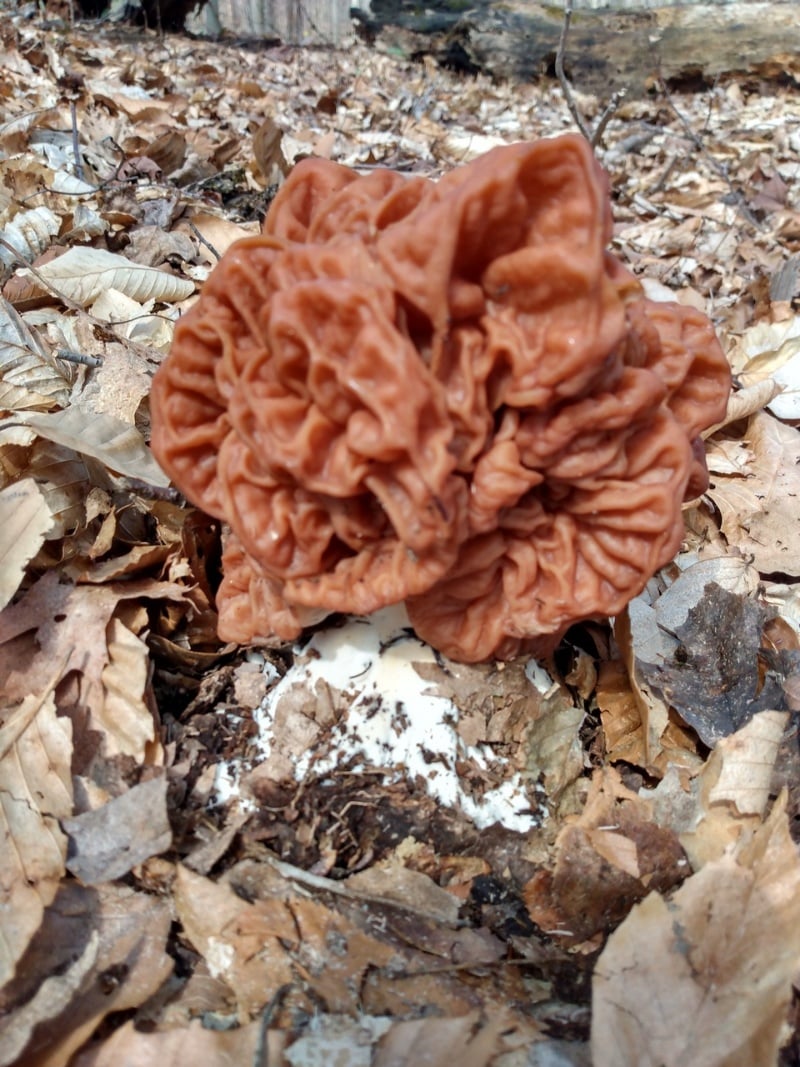
Jump to:
All About Big Red False Morels
Big red false morels are commonly foraged in the areas where they occur – primarily the southeast but also across the east coast. They are massive mushrooms, with some record specimens weighing up to 7 lbs! These false morels are valued for their significant size and density – a nice treat for the dinner table. However, eating these does not come without complications.
As with all the false morels, the edibility issue is complex. Since it is part of the Gyromitra species, it is thought to contain the toxic component gyromitrin and, therefore, be inedible. Or, edible with lots of parboiling. However, Gyromitra caroliniana in tests has little to no gyromitra recorded. These tests were done on limited specimens, but most people consider this species to be a “safe” false morel species and fine to eat. We’ll dive deeper into this issue in the section on Edibility.
Another big problem around edibility with this species is that the big red false morel can be confused with the beefy false morel (Gyromitra esculenta) which contains the most toxins of all the false morel species and MUST be prepared properly if it is to be eaten. Confusing these species, and then doing an improper preparation, can have dangerous consequences. Always make sure you are 100% sure of your identification before consuming this mushroom. And make sure to read up on the beefy false morel and understand the differences between them.
The big red false morel, also called the Carolina false morel, was initially described from the Carolinas, which is how it got its species name, caroliniana. The French botanist Louis Augustin Guillaume Bosc was the first to name the species in 1811 as Morchella caroliniana. Later, in 1871, Elias Fries transferred it to the Gyromitra genus. Despite some debate over the species’ classification and some ambiguity in its description, it was redefined in the 1970s based on specimens collected from Virginia.
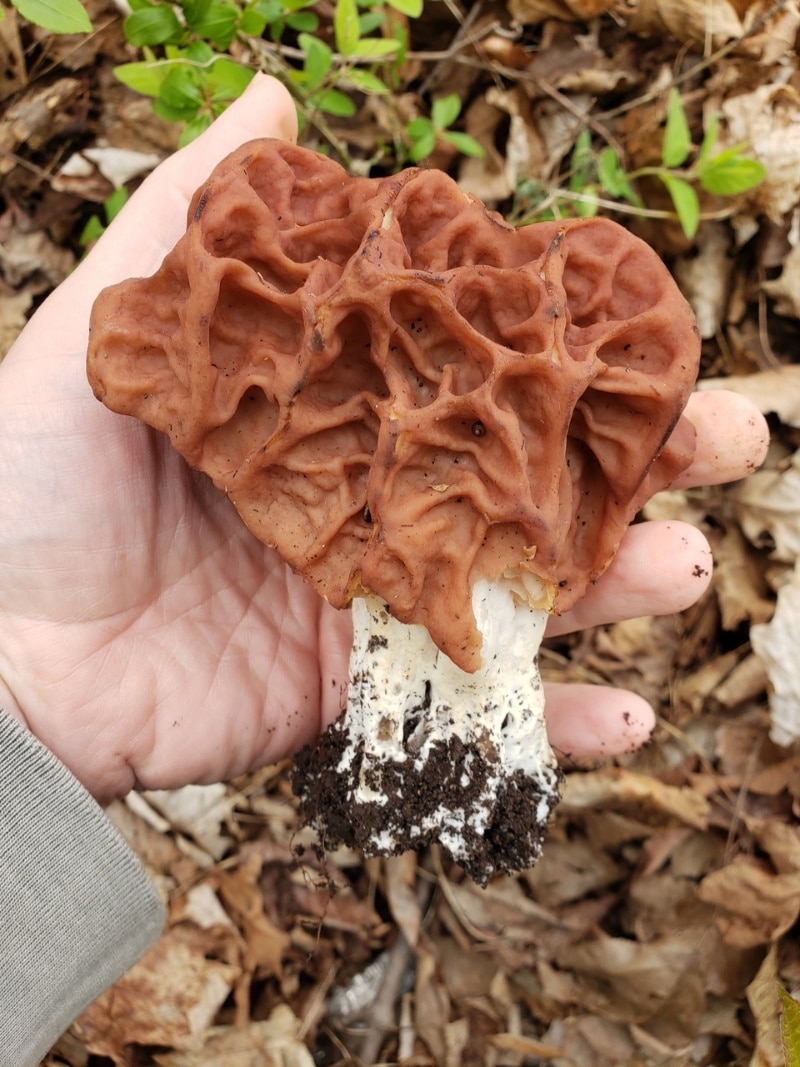
Big Red False Morel Identification Guide
Season
It typically fruits in the spring, with sightings as early as March in southern states but more commonly in April and May elsewhere. The species is known to appear soon after snowmelt, indicating the beginning of “morel season.”
Habitat
The big red false morel mushroom is commonly found in hardwood forests, mainly near stumps and other dead wood and along river bottoms. It is a saprophytic species, meaning it feeds off decaying organic material. It is likely that false morels are also mycorrhizal, forming relationships with specific trees, but this hasn’t been verified.
These false morels grow from the ground; they do not grow from trees or logs. They grow individually or in scattered groups in the woods.
Geographically, the big red false morel’s range includes Oklahoma to the Carolinas and extends north to the Great Lakes. It is especially abundant in the south and the Mississippi and Ohio watersheds. Reports of the fungus in Europe have been disputed and are likely due to confusion with other species.
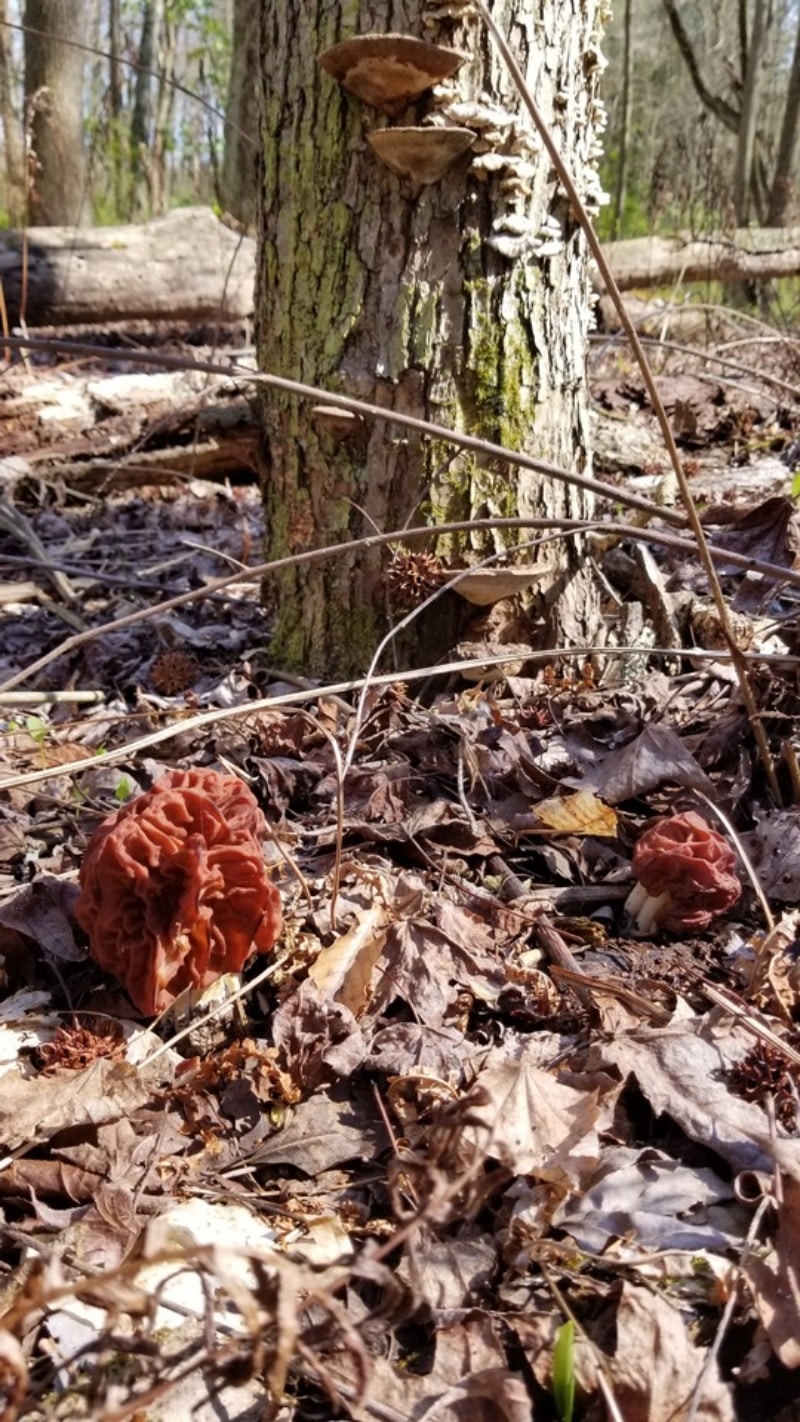
Identification
Cap
The cap of the big red false morel typically ranges between 6 and 8 inches in height and 2.4 to 5.1 inches in width. The cap is uneven, convoluted, crumpled, and brain-like but also usually rounded in overall appearance. The cap’s surface is tightly wrinkled, adding to its brain-like appearance. It is not lobed like many other false morel species.
Big red false morel caps are deep burgundy brown to reddish-brown. With age, the caps darken. The edge of the cap usually touches the stem and is often attached to it.
The overall appearance is of a tree in full foliage. There is the broad white stem (trunk) that is wider at the bottom and then a spherical arrangement of “foliage” around the top (rounded cap).
Pores
The big red false morel doesn’t have actual gills. Instead, it’s an ascomycete fungus, meaning it produces its spores in a special type of cell called an ascus. These asci are packed into the cap’s convoluted folds, hidden from view.
Stem
The stem of the big red false morel is pure white when young with a felt-like surface. It is massive and stout, typically between 2.4 to 3.9 inches long and 1.6 to 2.4 inches wide. The stem is deeply vertically wrinkled and usually wider at the base. The upper portion of the stem is usually branched, but the cap hides the branches. These branches are also called ribs or limbs.
Flesh
The big red false morel’s flesh is whitish to grayish. It is densely packed into the cap and stem. But, the flesh isn’t solid all the way through – there are chambers and cavities throughout and mycelial cotton-like stuffing. When you cut the mushroom in half, you can see the branching or ribs, which resemble a tree or floret of broccoli.
The flesh is brittle, especially the cap. The thicker, denser stem is more hardy.
Odor and Taste
The big red false morel doesn’t have a distinctive smell or taste.
Spore Print
This species has a yellow spore print.
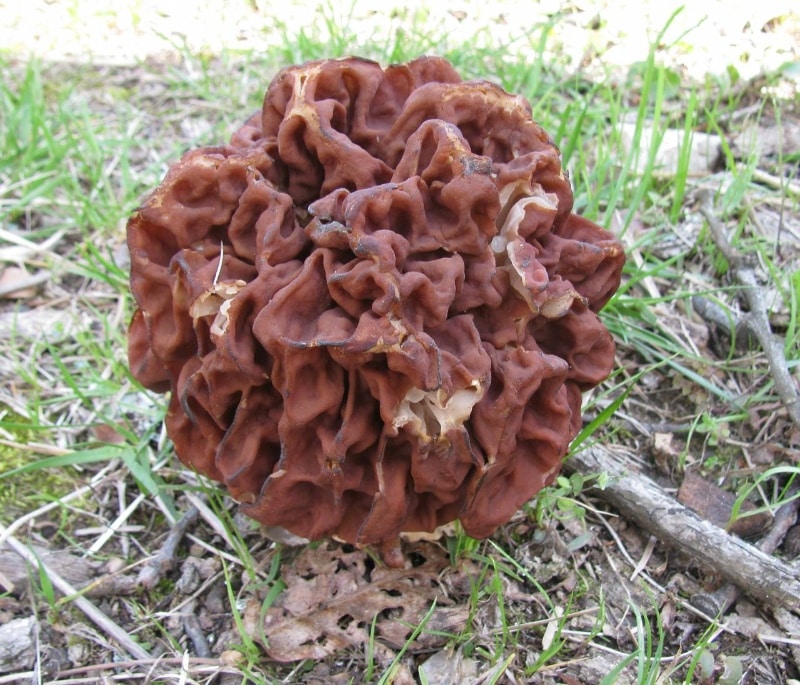

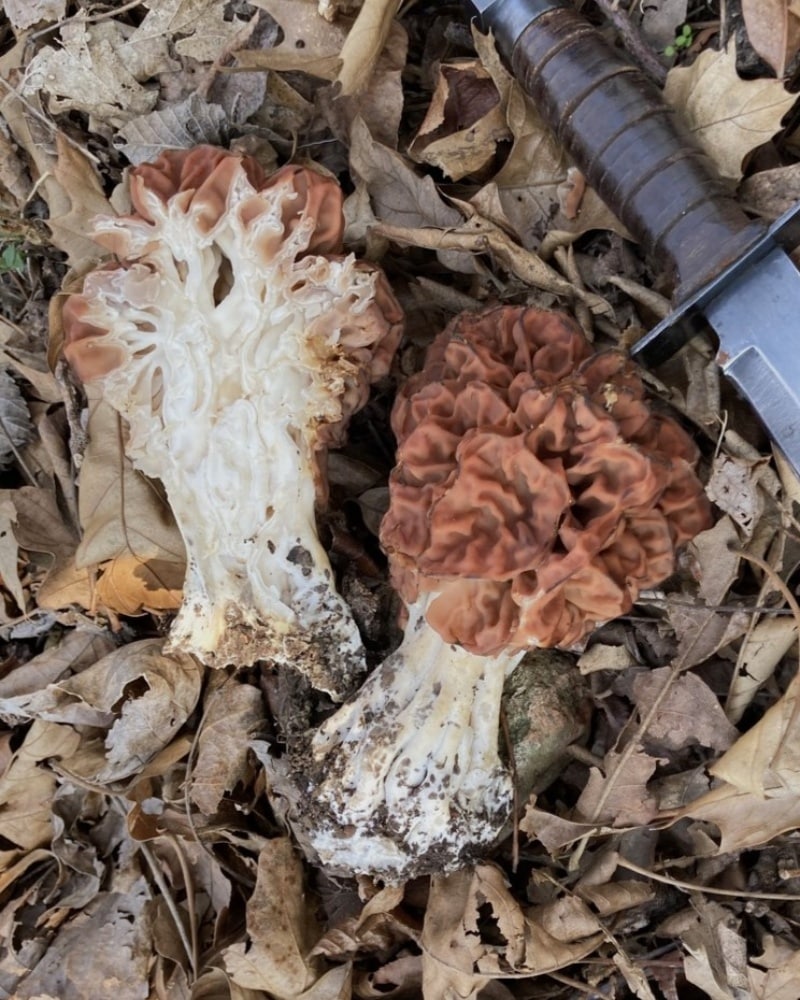
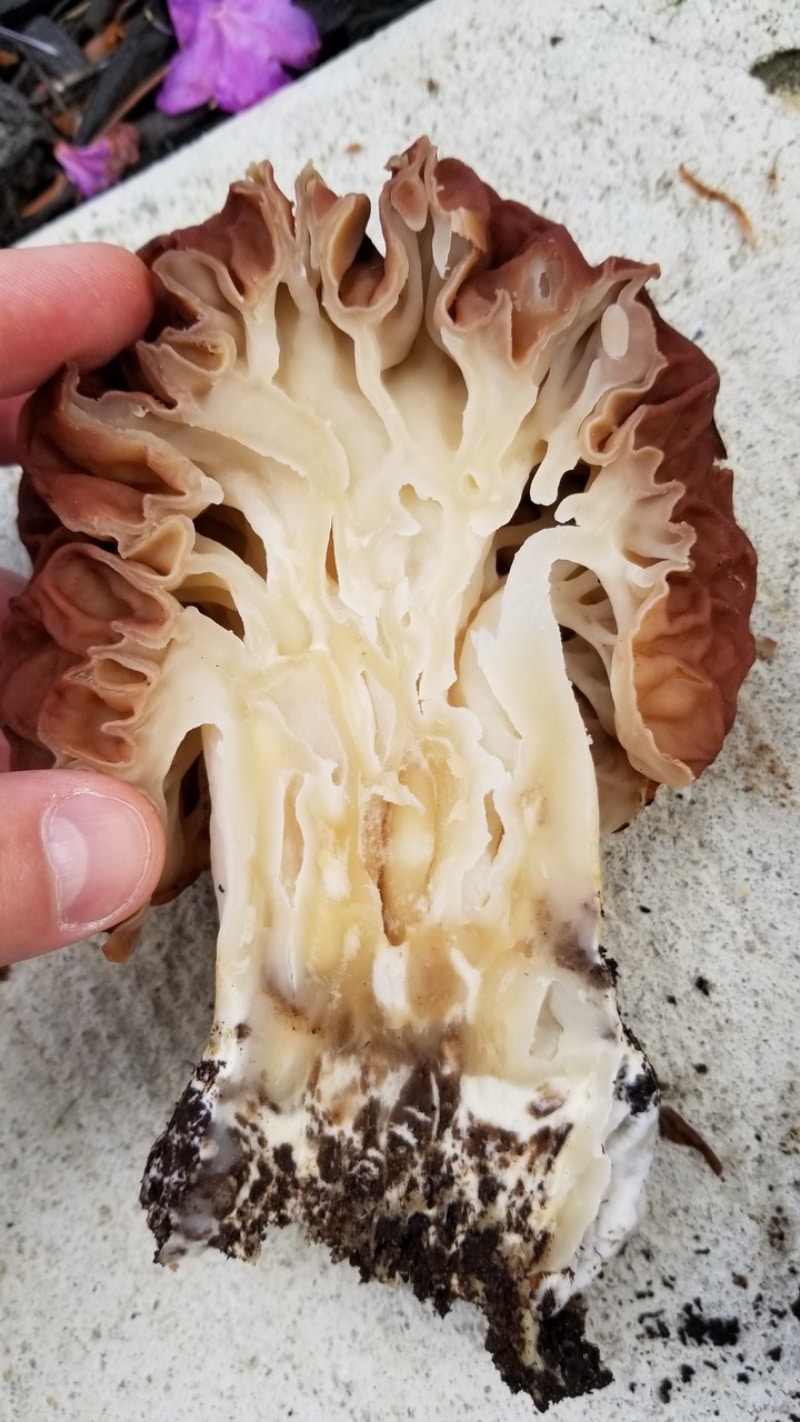
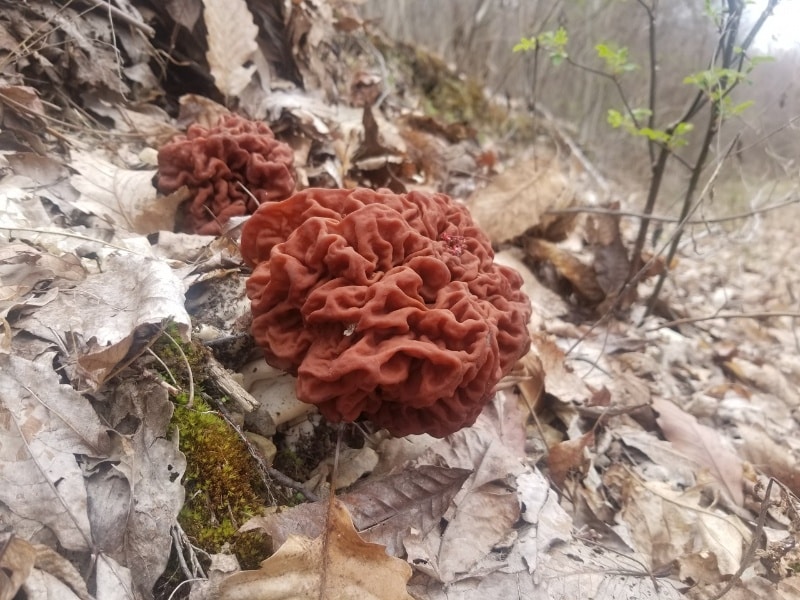
Big Red False Morel Lookalikes
Elephant Ears (Gyromitra brunnea)
The elephant ear false morel is slightly similar in appearance and has an overlapping geographical range. However, its cap is distinctly lobed to resemble ears or a saddle. It also lacks the ribs and cross-ribs found in the big red false morel when you cut it in half.
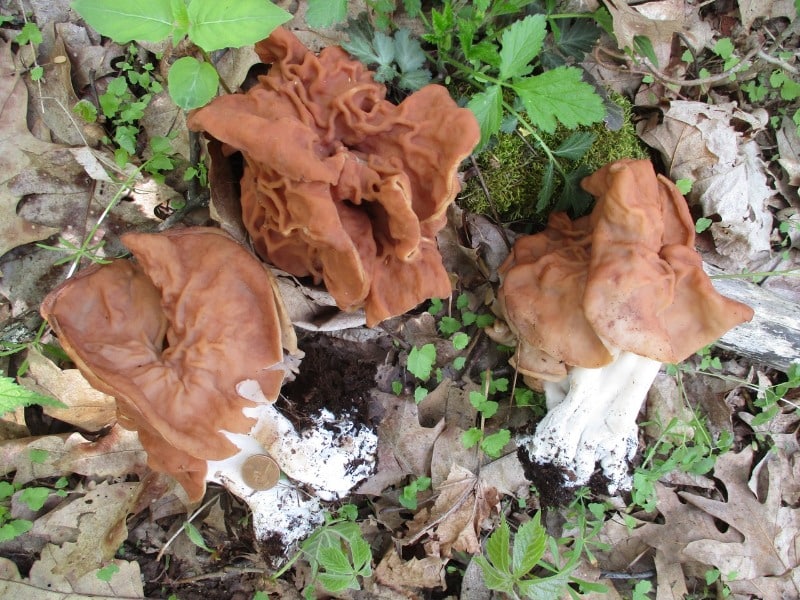
Snow Morel, aka Calf Brain (Gyromitra korfii; Gyromitra gigas)
The snow morel has a more block-like appearance –its not rounded like the carolina big red. And, its cap surface has fewer wrinkles, folds, and convolutions. It also has a very thick stem that is often as wide as the cap.
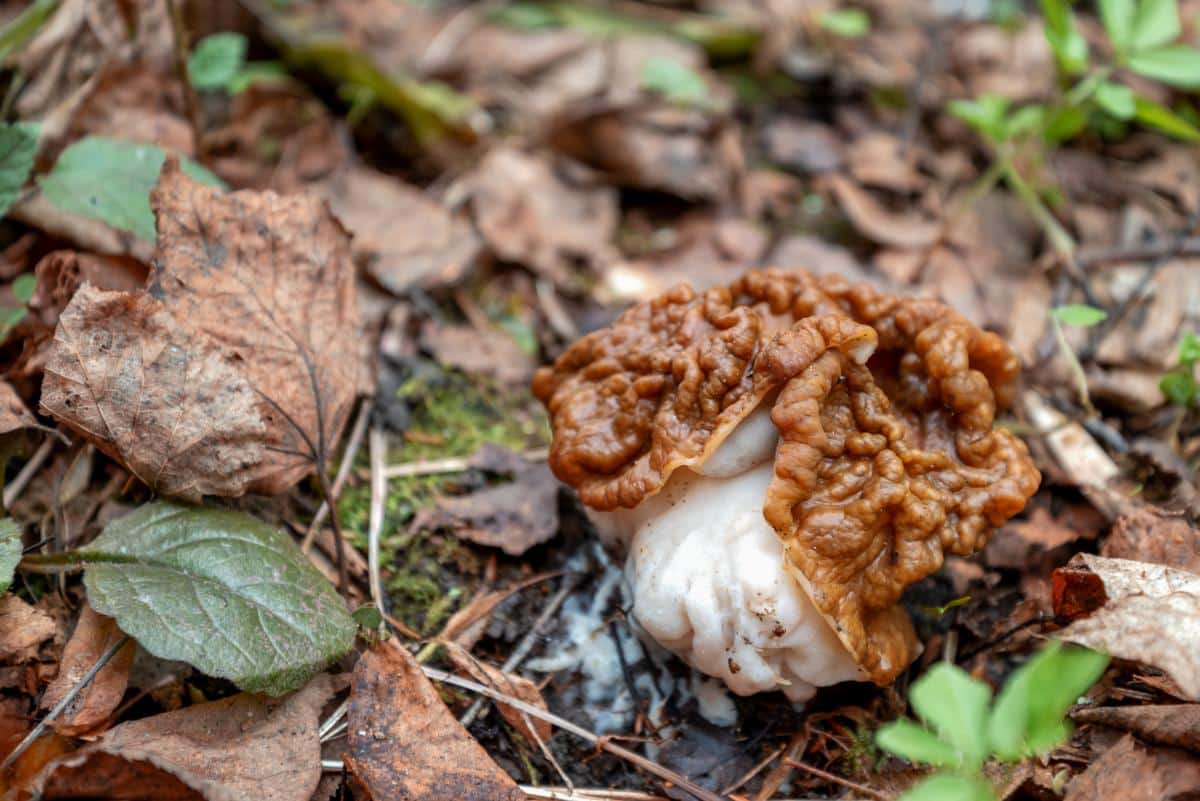
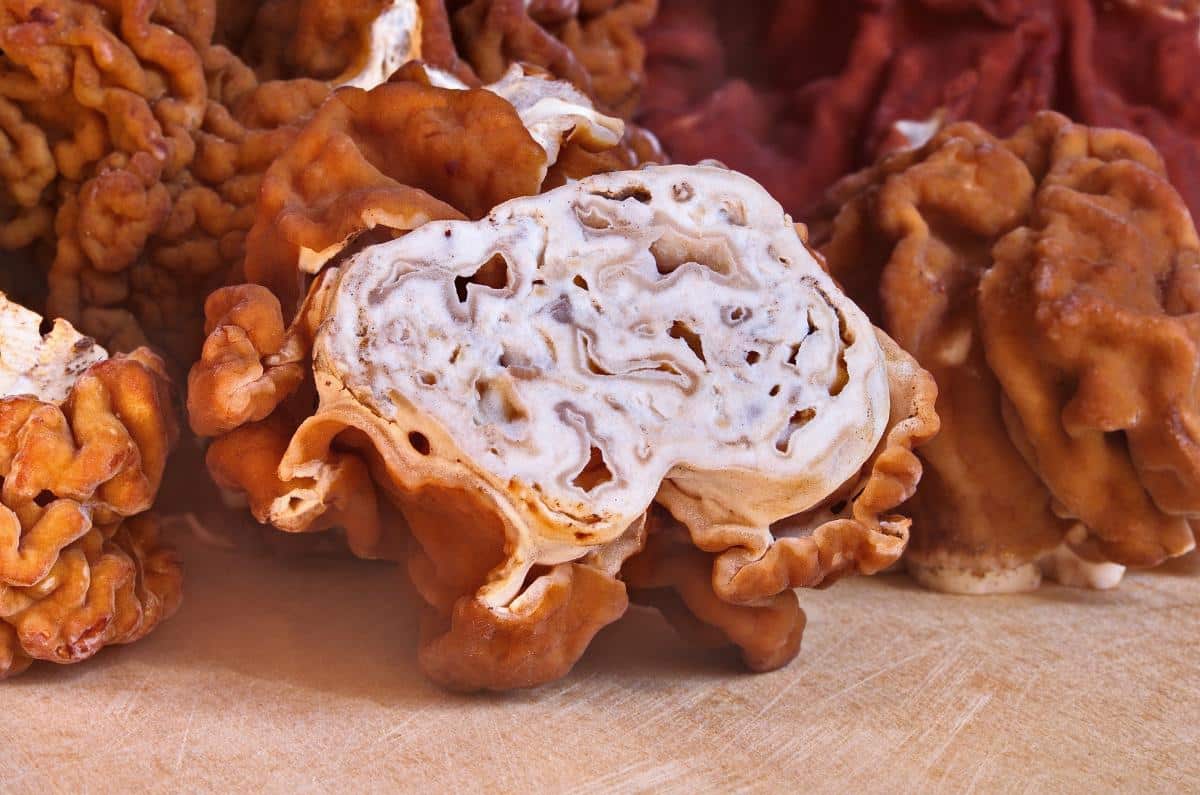
Beefy False Morel (Gyromitra esculenta)
The beefy false morel species looks quite similar to the big red false morel, and that is a problem. This species is the most toxic of the false morels. It has a loosely lobed, irregularly shaped, brain-like cap that is much more brain-like than the big red false morel.
Beefy false morels tend to be more tightly formed with dense, closely spaced wrinkles. The big red false morel looks more crumpled than densely wrinkled. A good way to tell these two species apart is to cut them in half. The carolina big red will have a stem that branches towards the top like a tree. Beefy false morels do not do this.
These two species also have different habitat preferences. Beefy false morels grow around conifers while big red false morels grow around hardwoods. In mixed forests, it might be more difficult to ascertain who the mushroom is growing near. But, the false morels usually grow quite near their preferred tree species so it can help a lot to know conifer vs. hardwood.
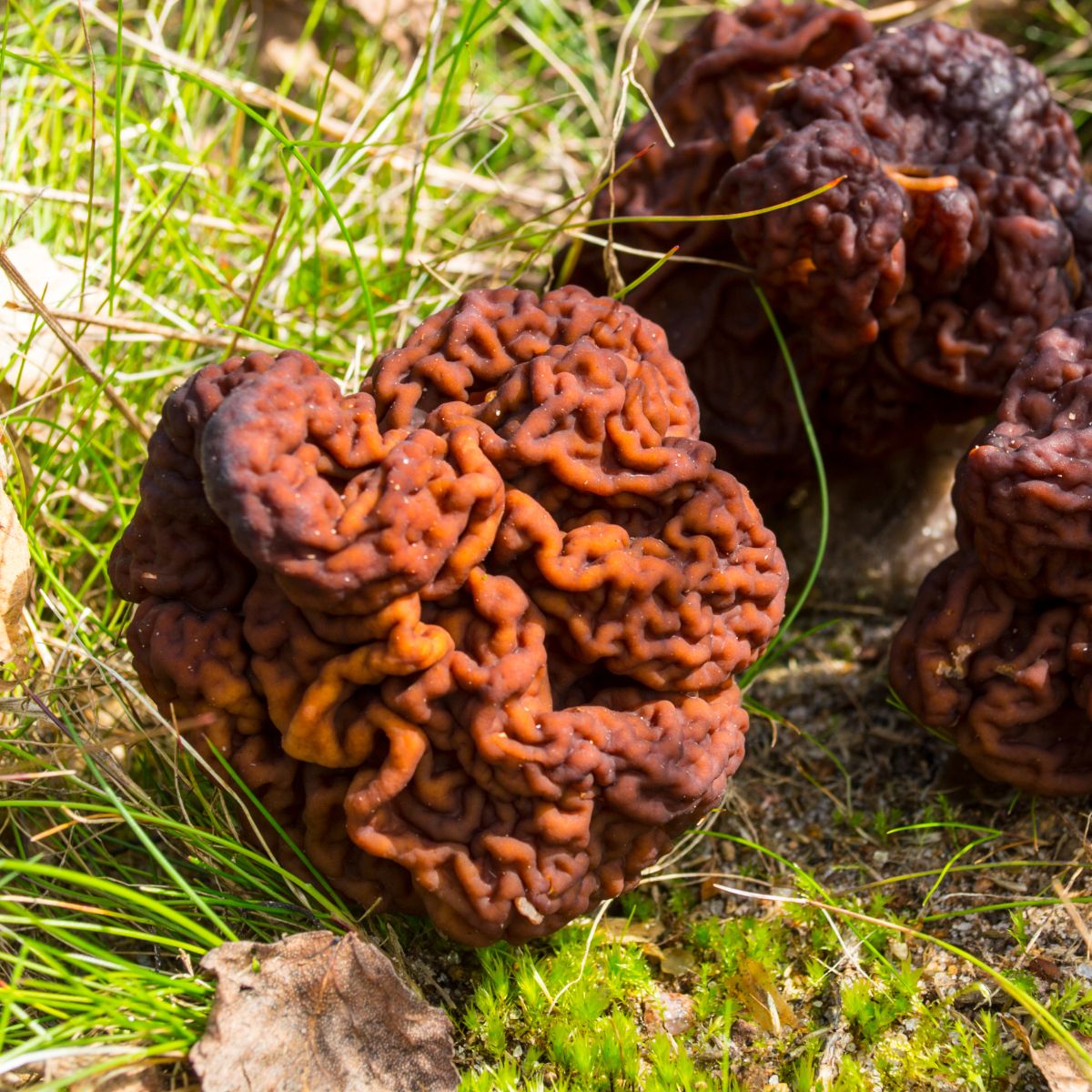
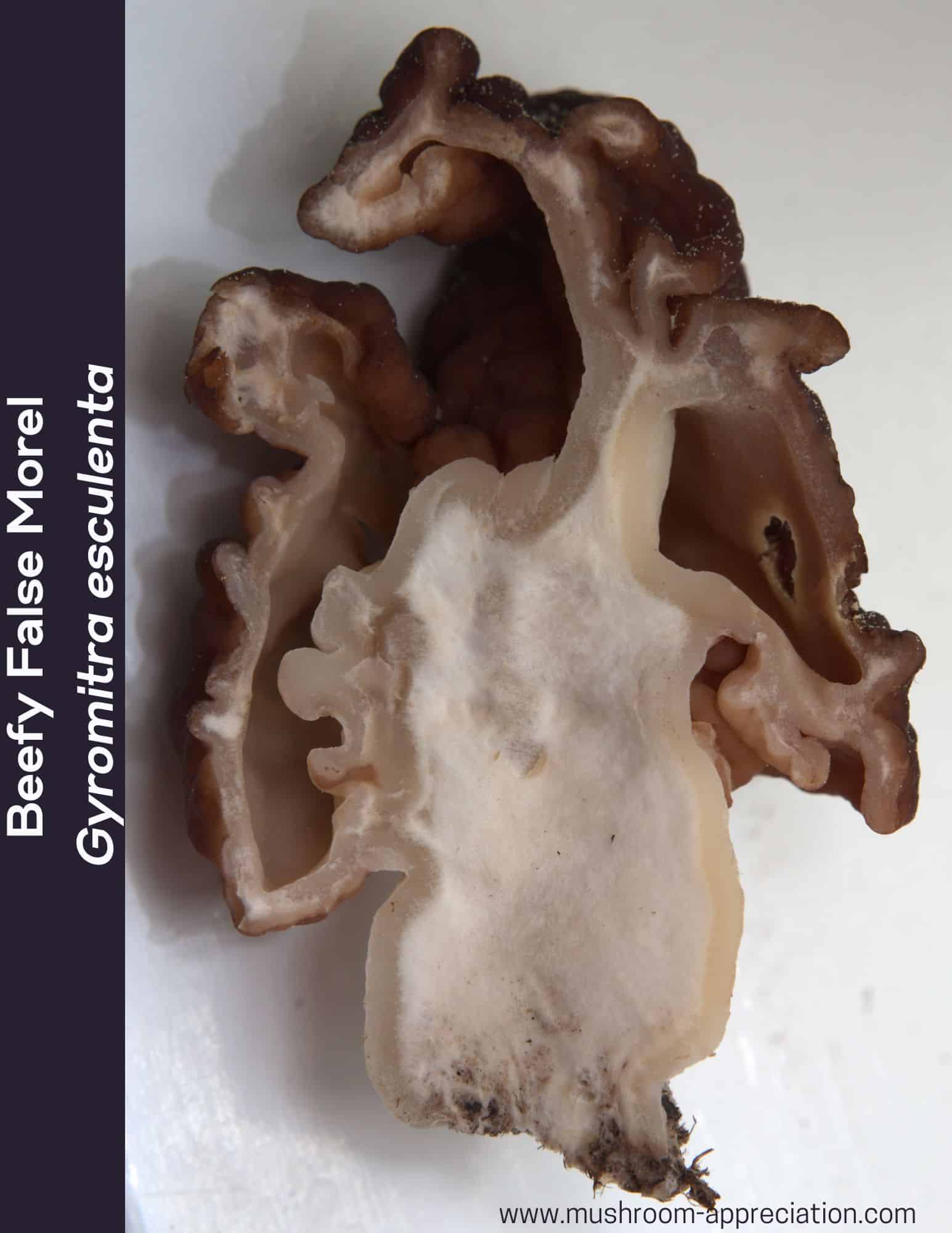
Elfin Saddles (Helvella)
Elfin saddles have thin stems compared to their cap size, and the stem is deeply ridged or fluted. Most also aren’t brown, but some are, so color can’t always be relied upon to tell them apart.
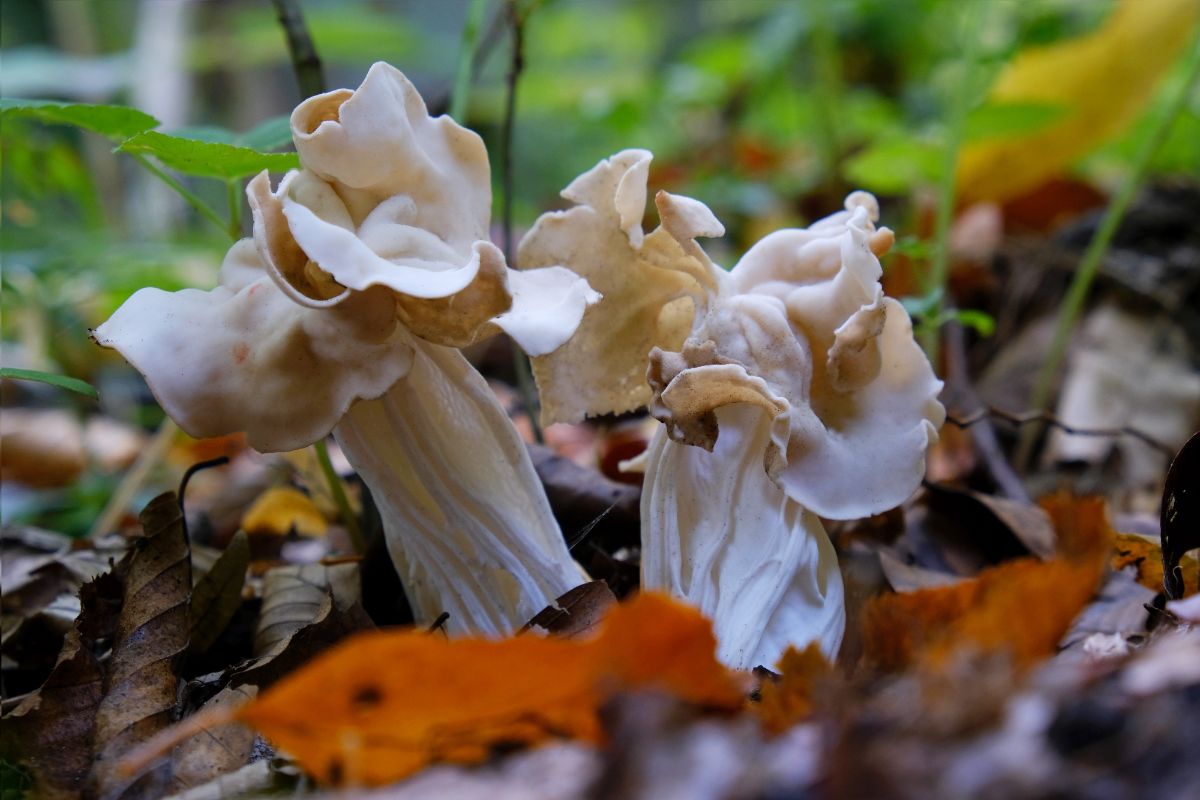
Morels (Morchella spp)
Morels have distinct ridges and pits on their heads and aren’t deep burgundy-brown – they are yellowish, grayish, or blackish. They are also hollow inside.
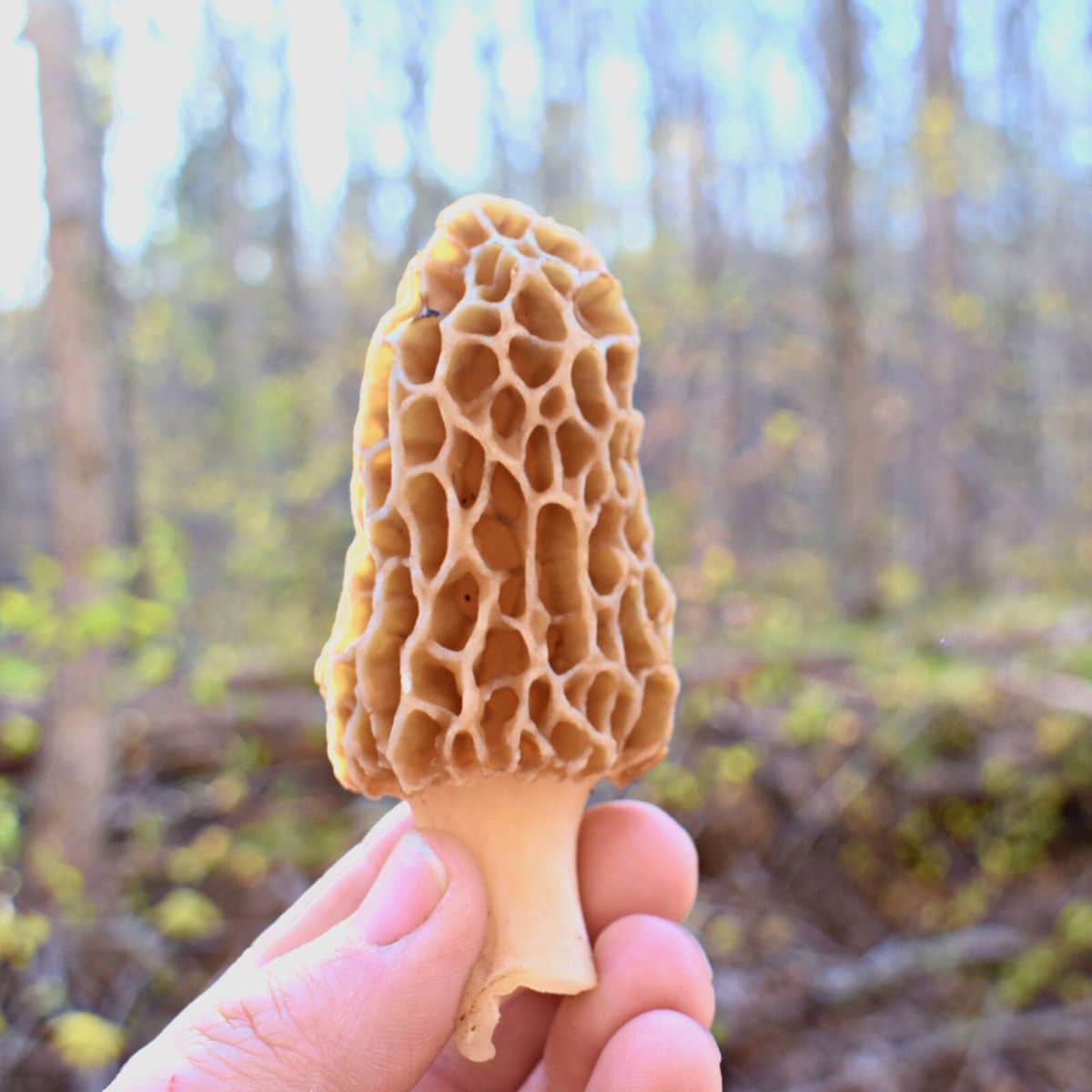
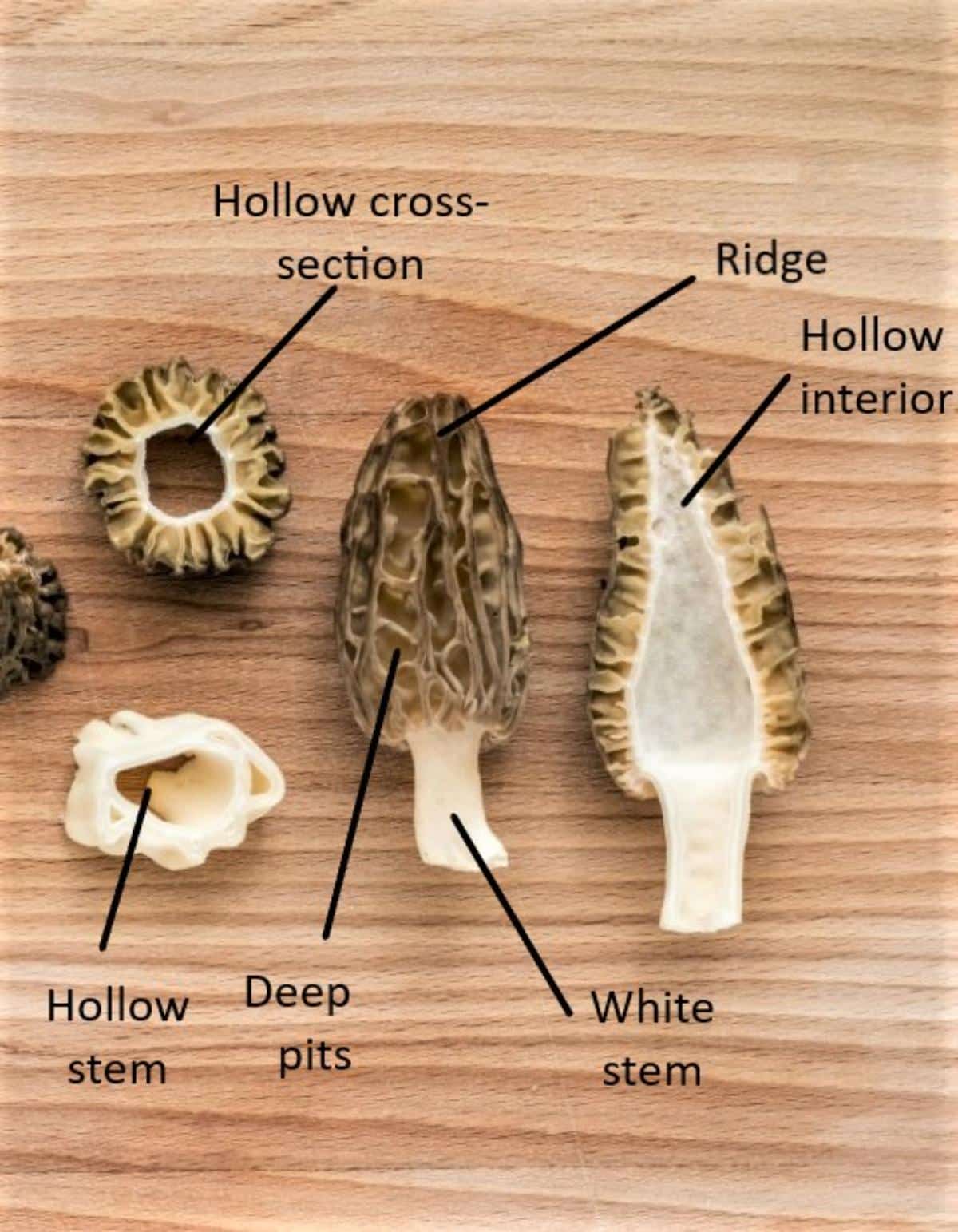
Big Red False Morel Edibility
The edibility of big red false morels is a topic of debate, along with all the other Gyromitra species. Some Gyromitra species contain gyromitrin, a dangerous toxin and carcinogen, leading many to label the entire genus as poisonous. However, others argue that not all species contain significant enough quantities of this toxin to make them problematic. Big reds, though, have been reported to be safe when cooked thoroughly. However, caution is advised due to insufficient scientific studies assessing its toxicity.
We do not encourage or discourage the foraging and eating of this species. It is up to you to decide whether you want to consume this one, and your risks are your own.
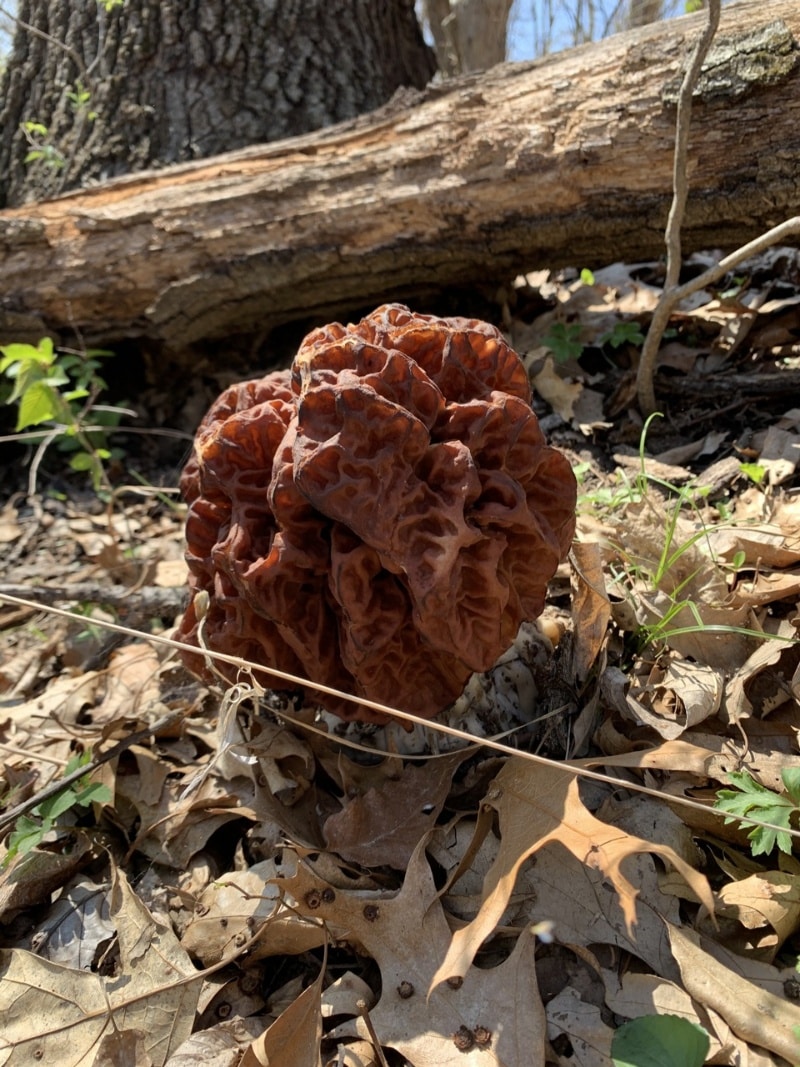
If you’re unfamiliar with the topic, certain Gyromitra species contain a chemical called gyromitrin. Gyromitrin is water soluble and easily converted into monomethylhydrazine (MMH) in the body. Monomethylhydrazine is highly toxic and carcinogenic, and it is also used as a fuel for rockets. The amount of gyromitrin varies by species, location, and other variables that still need to be understood entirely.
Gyromitrin has been linked to various health risks. It acts as a hemolytic toxin, destroying red blood cells and affecting the central nervous system. The liver and gastrointestinal tract can also suffer damage from gyromitrin ingestion.
The consumption of raw Gyromitra can be potentially fatal (do not eat these raw!), leading to severe poisoning symptoms that affect the liver, central nervous system, and kidneys. These symptoms typically include vomiting, diarrhea, dizziness, lethargy, and headache. In severe cases, delirium, coma, and even death can occur. The potential long-term effects of consuming small amounts of this toxin remain uncertain.
In addition to the issue of Gyromitra species containing toxins and how much, there is another problem. Recent studies show that gyromitrin (as MMH) is a cumulative toxin. This means that it will build up in your body with repeated consumption over a short period of time. This potentially could lead to illness or even death. For us, this is a more concerning aspect compared to its immediate toxic impact.

In general, Gyromitra esculenta is known to be the most hazardous due to its high levels of Gyromitrin/hydrazine. This is perplexing, considering that G. esculenta may be the most commonly ingested Gyromitra worldwide. This is due to the fact that countries with a history of consuming mushrooms are known for consuming this specific species. In Finland and Germany, you can find this “poisonous” mushroom for sale in markets and even packaged in cans for sale at the grocery store.
While there is no data on the number of people who have consumed Gyromitra without experiencing symptoms, there are statistics on confirmed cases of poisoning. According to the North American Mycological Association’s (NAMA’s) poisoning database, there are no reports of people experiencing toxic effects after eating Big Red, Gyromitra caroliniana.
As a result, Michael Beug, the chair of NAMA’s toxicology committee, suggests that Gyromitra caroliniana should be considered to have the same toxic status as morels: poisonous when eaten raw but safe when properly cooked. Notice it says when properly cooked. This is extremely important. There are methods to remove toxins, if there are any, and they should be followed. Long-term scientific studies have yet to be conducted to assess the presence of toxins in Gyromitra caroliniana, though, so the debate still needs to be solved.
All that exists is knowledge and cultural practices passed down through generations about how to forage and prepare this species. And the lack of known deaths or even reports of poisoning. All in all, if it were truly as poisonous as some state or assume, we’d probably have heard about it. Or we haven’t because most people strongly and steadfastly avoid all Gyromitra species (at least in North America).
If you choose to consume these mushrooms, it is essential to be familiar with the signs of gyromitrin poisoning in order to seek immediate assistance if necessary. Symptoms typically start 2-24 hours after ingestion or inhalation of cooking fumes. These may include intense headaches, gastrointestinal discomfort, vomiting, and severe diarrhea. In some cases, the toxin can be more deceptive and cause harm to the red blood cells, liver, and kidneys, which can ultimately lead to death.
Also, the compound gyromitrin has been identified as a potential carcinogen, possibly leading to the development of cancer in the long run. This is a more concerning aspect compared to its immediate toxic impact.
A lot might depend on where the false morel is foraged from (country, state, county), its age, and its genetic strain. With Gyromitra species, toxicity levels can vary quite a lot between specimens. Some that are fine in one region are high in toxins in other regions. With big red false morels, in particular, there is no data showing where they’re “safer.”
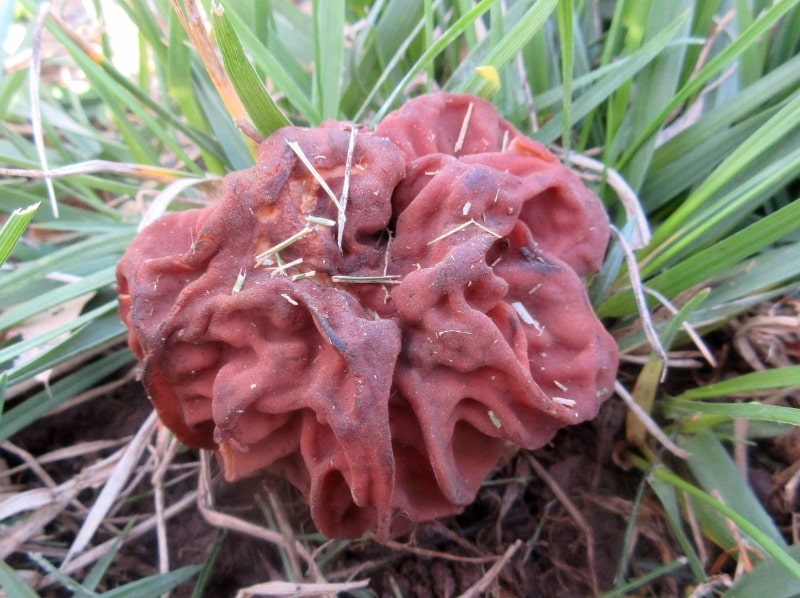
Big Red False Morels Cooking and Preparation
If you decide to try Carolina big red false morels, it’s crucial to prepare and cook them properly. Now, there are a lot of people who have been eating these for decades, and they prepare them differently, and that’s fine. In fact, I’m sure this article will get some pushback about my insistence on robust cooking, which includes parboiling. However, I want everyone who has never eaten these to proceed with utmost caution. Maybe it’s being “overly cautious,” and I’m totally fine with that.
Most people who eat this species don’t do any parboiling as they do with other false morel species. This is due to the reputed lack of gyromitrin. Instead, they cook like true morel – giving the mushrooms a good saute before eating.
Remember, you alone are solely responsible for your choice to eat these. And it’s up to you how you prepare them.
Do not serve Gyromitra to individuals unfamiliar with the mushroom and the edibility controversy!
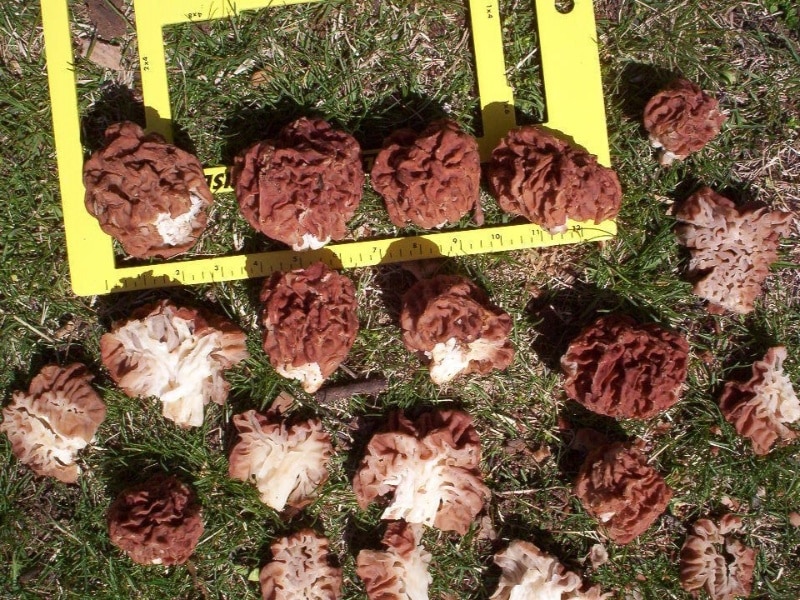
Big red false morels have a meaty and savory mushroom flavor. Their width and denseness make them highly sought after because they make quite a substantial meal. These are quite large, meaty mushrooms.
Unfortunately, these are not easy mushrooms to prep. The flesh is brittle, especially in the cap. Also, cleaning these mushrooms can be a pain in the neck. The chambered stem is a common hiding place for insects and spiders. Simply rinsing it off is insufficient, as the water cannot reach every cavity.
To get all the bugs, slice and wash each piece thoroughly. The stem of the big red tends to contain a lot of dirt; trim the mushrooms at the base to get rid of that dirt and debris.
Parboiling Preparation
Parboiling is recommended before cooking. However, be aware that the mushroom’s brittle flesh may result in smaller pieces than desired.
- Before cooking Gyromitra mushrooms, open all the windows in your kitchen. Turn on the kitchen hood fan if there is one. Alternatively, you can use a box fan to blow air out of the kitchen. (This may be overkill, but it certainly doesn’t hurt.)
- Boil a pot of water and add the cleaned and prepped big red false morels. Cover the pot and bring it back to a rolling boil. Cook for 10-15 minutes, depending on the quantity, until the mushrooms look wilted and fully cooked.
- Remove the mushrooms from the water and discard the water.
- Place the mushrooms between paper towels and press to remove excess water.
- Cook up as desired (frying is a standard method)
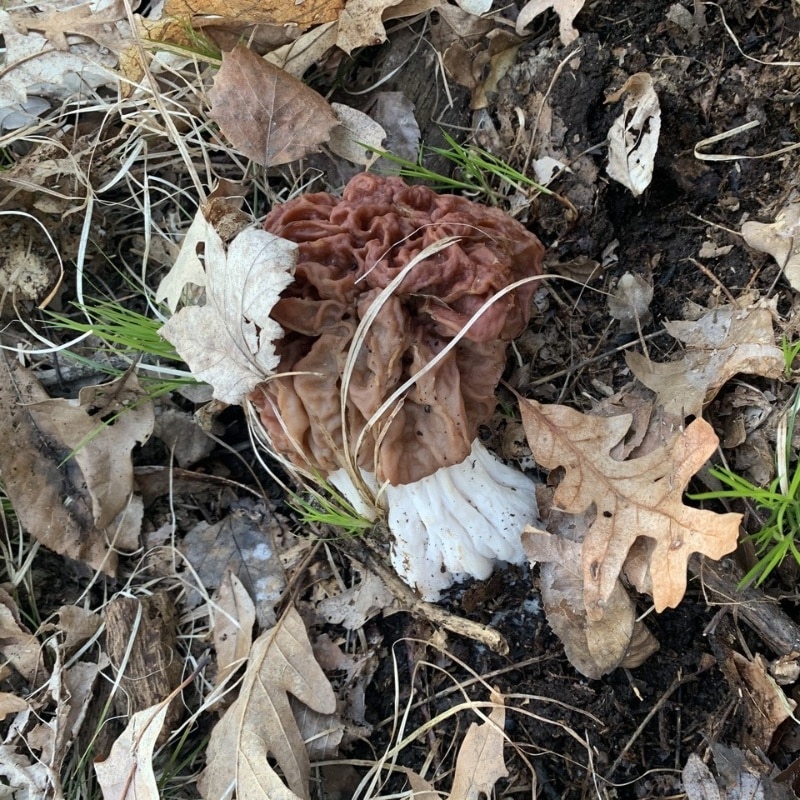
If you’re interested in further reading and learning more about eating false morels, check out these link:
- Cytotoxic fungi, an overview.
- Poisoning by Gyromitra exculenta – a review
- Case Report: Acute liver injury, acute liver failure and acute on chronic liver failure: A clinical spectrum of poisoning due to Gyromitra esculenta
- Not all bad: Gyromitrin has a limited distribution in the false morels as determined by a new ultra high-performance liquid chromatography method
- Gymomitra esculenta, Tom Volk’s Fungus of the Month
Big Red False Morel Common Questions
Do big red false morels have medicinal properties?
There are no known medicinal properties of the big red false morel (Gyromitra caroliniana).
Is the big red false morel edible?
Yes, with caveats. The big red false morel, Gyromitra caroliniana, is widely consumed in areas where it grows. Most people consider it a safe species and prepare it similarly to true morels. However, species in this family are known to contain toxins. Whether you consider this species edible or not depends on your risk factor. There are ways to prepare it that reduce the toxins and make it “safe.”
Does the big false morel have dangerous lookalikes?
Yes. The big red false morel (Gyromitra caroliniana) can be confused with the beefy false morel (Gyromitra esculenta) which contains the most toxins of all the false morel species and MUST be prepared properly if it is to be eaten. Confusing these species, and then doing an improper preparation, can have dangerous consequences. Always make sure you are 100% sure of your identification before consuming this mushroom.

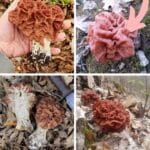
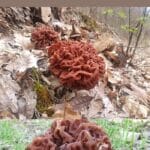
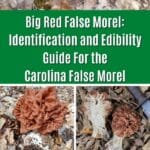
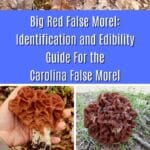

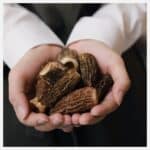
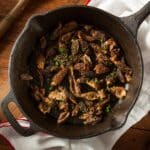
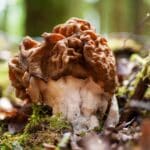
Leave a Reply